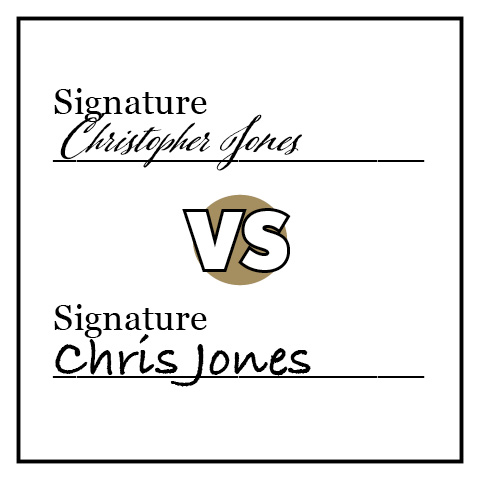Every year, my grandpa sends me a heartfelt birthday card, personalized and thoughtfully written. And every year, I struggle to read it, not because he writes too small or his handwriting is bad, but because it’s written in cursive.
Many young people, like myself, struggle to read and write cursive, and it’s not hard to understand why. Most of us had a short unit in third grade that covered the skill, but we spent very little time on it and never reviewed it. It simply didn’t seem relevant.
Since then, I’ve wished I paid more attention because cursive is everywhere. From letters from my grandparents to billboards on the side of the highway, nowhere is free of the flowing font.
In a world gone digital, it made sense to assume that we wouldn’t need to learn a special form of handwriting. Instead, we spent much of our time on typing lessons, learning home row. While typing is an essential life skill today, it’s most definitely not the only one needed.
People need to know how to sign their names at the bare minimum, and many high schoolers can’t even do that. I won’t claim to be great at writing or even reading cursive, but I can at least sign my name. Everyone needs to be able to do that in order to get anywhere in life.
However, cursive isn’t just a skill to put in our toolbelt; it’s an art form too. Not only is cursive used in calligraphy and other lettering systems, it also gives an overall different impression of a piece of writing. It’s easy to write in print, letter by letter. It takes a lot more thought and deliberate effort to write something in cursive.
Things written in cursive appear more sincere, heartfelt, and genuine, which are things we should all strive for in written communication, where you can’t express your emotions through your tone of voice and inflections. When I see something written in cursive, it gives me warm, homey vibes. That’s why ad campaigns tend to use so much of it. Its elegant way of all fitting together feels more peaceful and effortless than standalone letters placed next to each other.
Additionally, adults usually use and know cursive a lot better than teenagers, so it’s important to be able to read it. Working on my cursive skills has allowed me to decipher my grandpa’s birthday cards and other notes with more ease, which has drastically improved my appreciation of them.
We should all make more of an effort to learn cursive because it benefits us in so many ways. With its flourishes and precision, it presents a different impression than print handwriting. Some people think cursive is overrated, but it is still relevant, with one glaringly obvious and essential purpose. All of us need to at least learn to sign our names.




